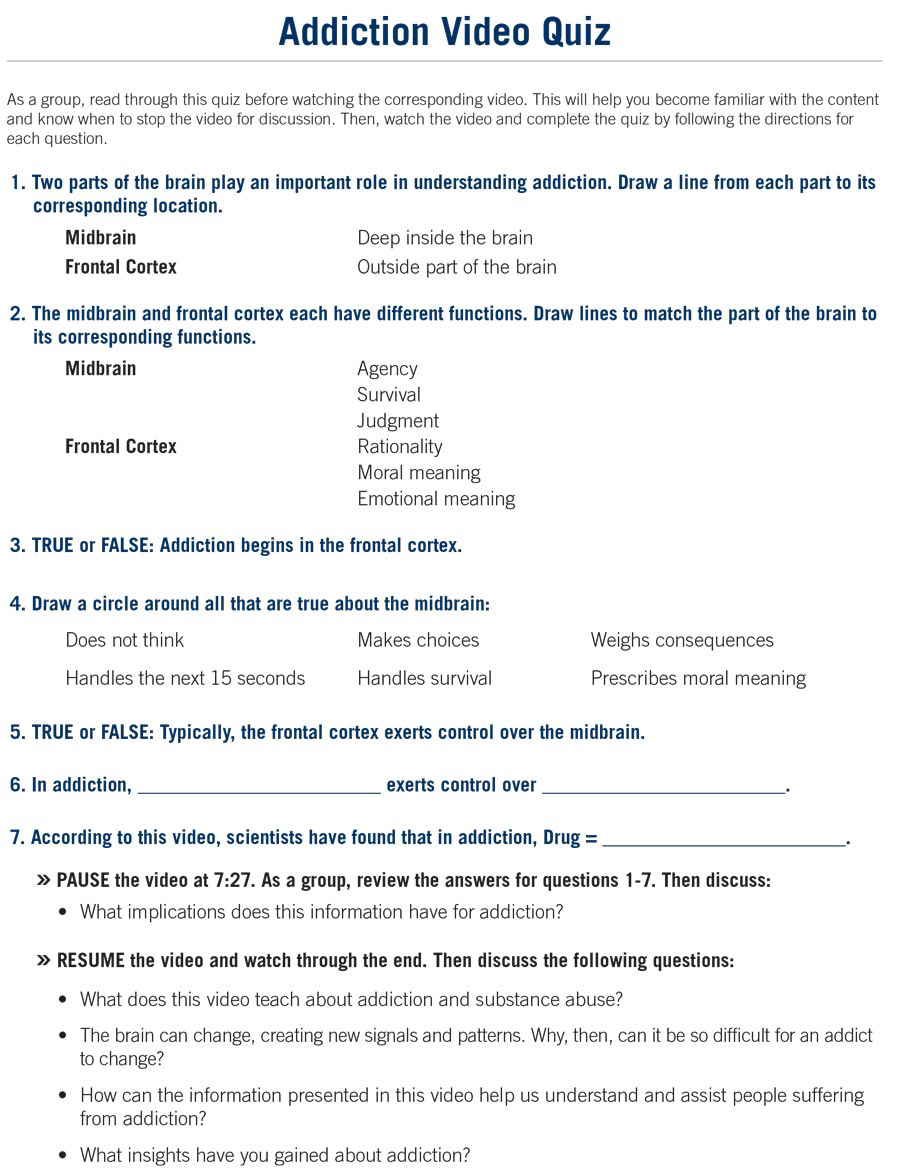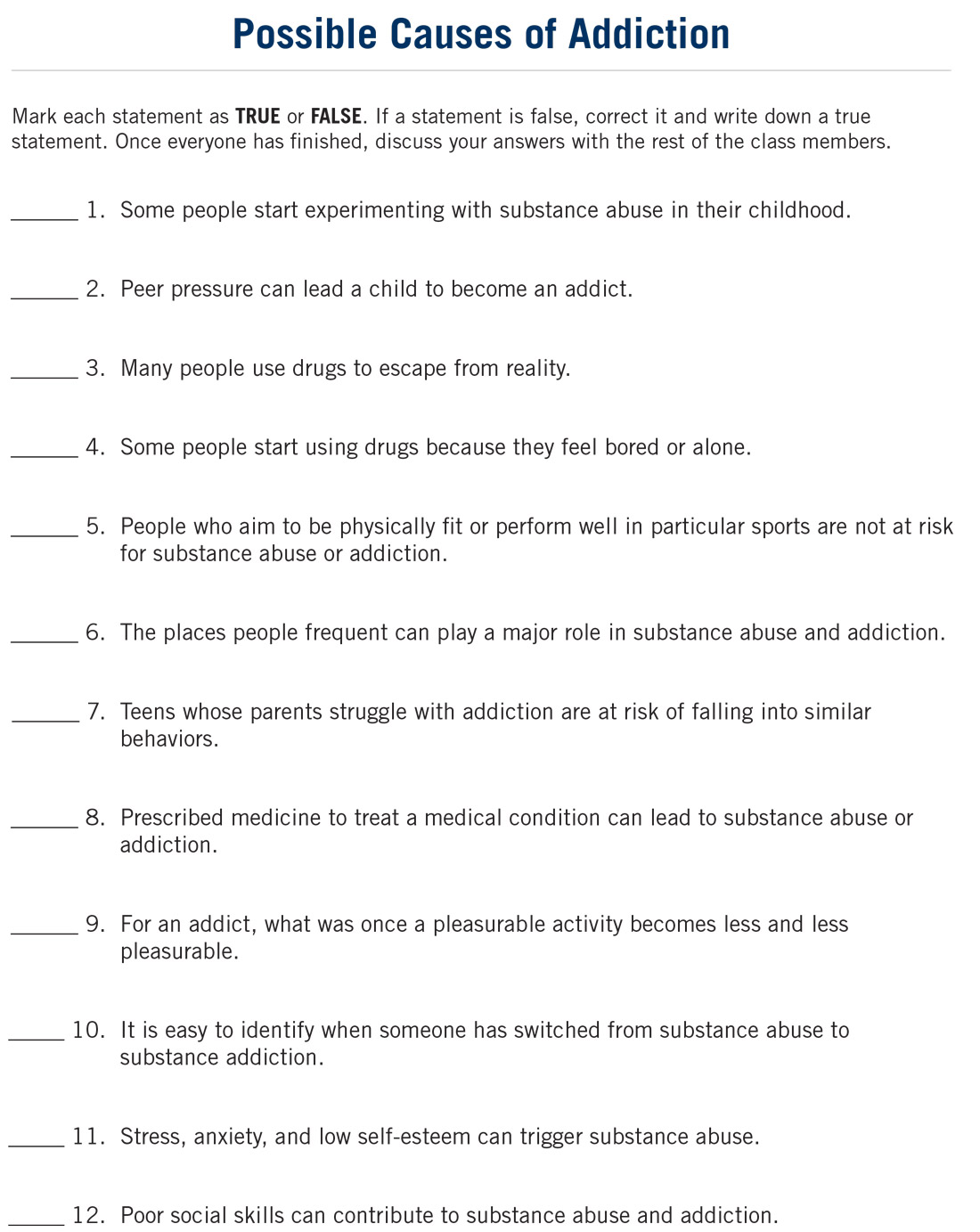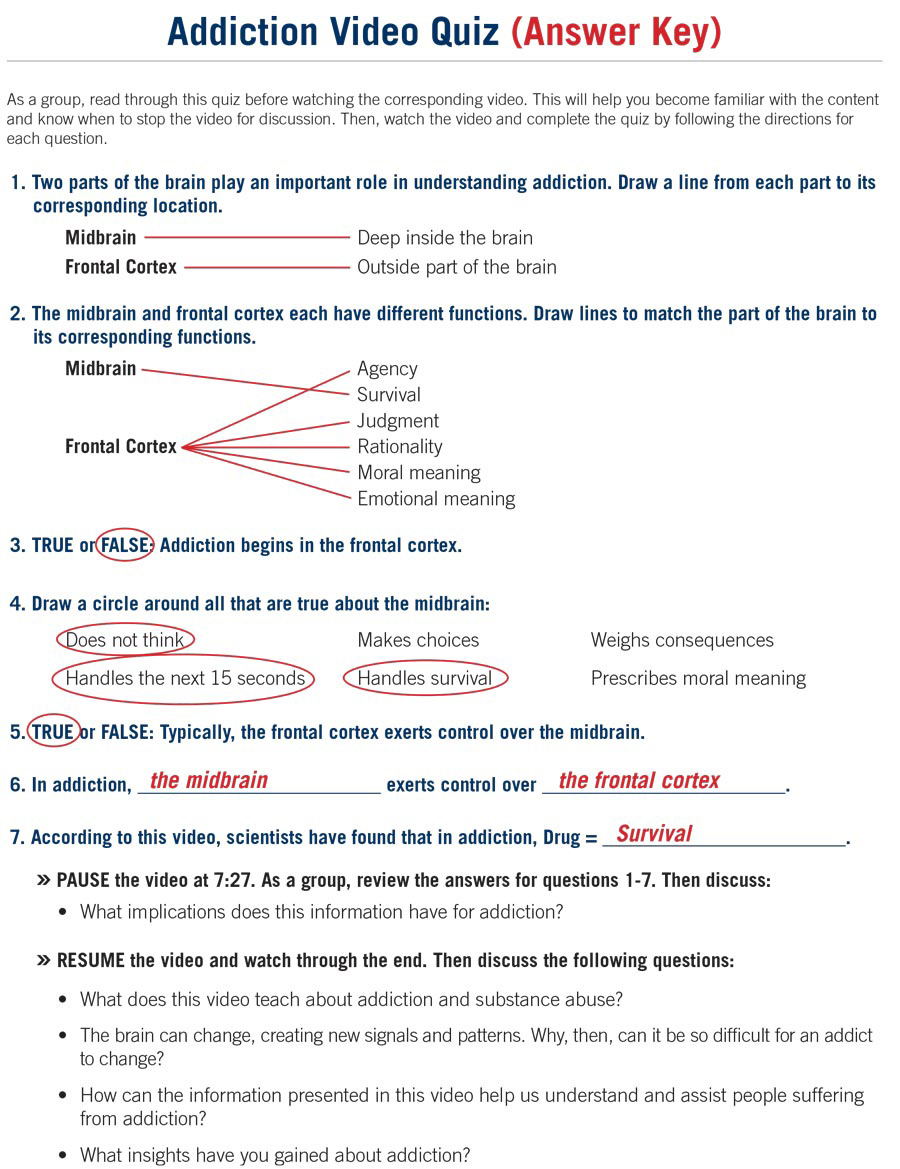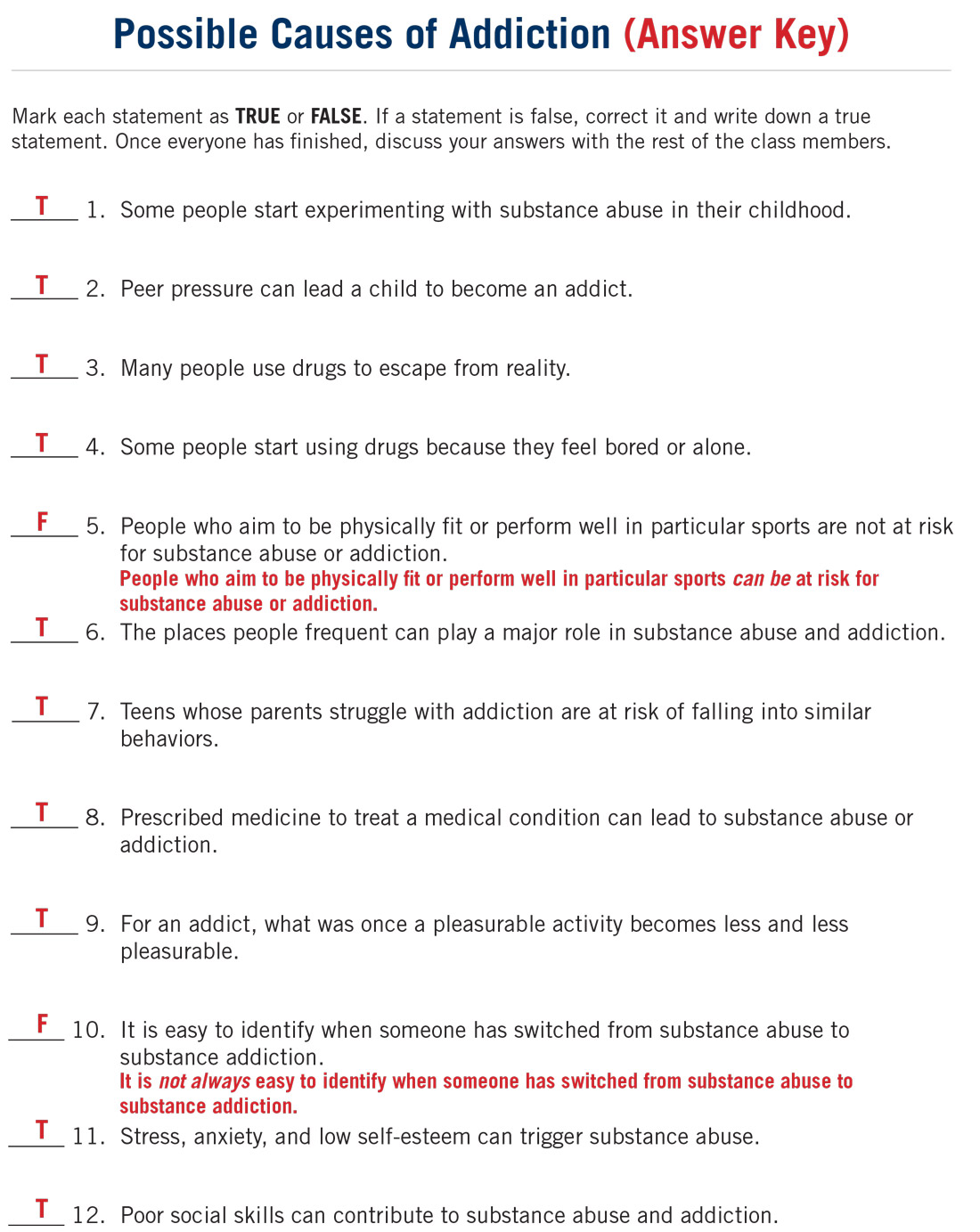Before coming to your training, please do the following:
Understanding addiction and its causes will help you assist those who might be struggling with it. In this lesson, you will learn more about (1) what addiction is, (2) its causes and triggers, and (3) the Christlike attributes you can develop to support associates struggling with addiction.
Note: Although this lesson contains information, theories, and personal anecdotes about addiction, the Church does not endorse any specific approach to or theory about addiction or addiction recovery. There are many other valuable theories about addiction. The information and stories in this lesson are included to help you think about ways to help your associates who are struggling with addiction. As you work with these associates, seek the guidance of the Spirit to know how to help them best.
From the following list, choose and complete one or more activities that best apply to your situation.
Many models and theories explain addiction. The video “Landscape of the Mind: Addiction Explained” (available on mormonchannel.org) focuses on one of these models and provides a unique perspective on what happens to the brain during addiction. Before watching the video, review the Addiction Video Quiz found in the “Lesson Resources” section, Resource 1. Then watch the video and follow the instructions on the quiz to complete this activity.
Some scholars, practitioners, and organizations promote the idea that substance addiction is a disease. Supporting data includes brain imaging studies showing that drug consumption strongly affects the brain, disrupting the way in which nerve cells normally communicate, and targeting the brain’s reward system. This rewiring of the brain causes compulsive behavior—such as drug seeking, use, and abuse—in spite of the harm this may cause to the addict or to those around the addict (for more information see the National Council on Alcoholism and Drug Dependence, Inc.).
As a group, discuss:
Then, discuss the following:
Invite a person who has struggled with addiction to talk to you about his or her experiences. This person could talk about any of the following questions:
You could also ask additional questions to help you understand addiction and learn more from this person’s experiences.
From the following list, choose and complete one or more activities that best apply to your situation.
As a group, list at least 10 to 15 different factors that contribute to addiction and discuss why they are factors. Then discuss and classify these factors into the three following categories:
Explain why you have classified each factor this way and reach a consensus among class members about each classification. Then discuss the following:
Complete the true or false Possible Causes of Addiction quiz found in the “Lesson Resources” section, Resource 2. If a statement is false, correct it and write down a true statement. Once everyone has finished the quiz, discuss your answers with the rest of the group.
Additionally, discuss the following as a group:
Invite a person who has struggled with addiction to talk about his or her experiences with the group. This person could talk about any the following questions:
You could also ask additional questions to help you understand addiction and learn more from this person’s experiences.
From the following list, choose and complete one or more activities that best apply to your situation.
Choose two videos about substance abuse and addiction to watch from the 12 Steps to Change series (available on addictionrecovery.lds.org). As you watch, pay attention to how people felt during their addictive behaviors, when they decided to change, and how they felt after they started the path to recovery.
After watching the videos, discuss the following as a group:
Throughout the scriptures, the Lord compares His people to sheep and describes Himself as the Good Shepherd. Sheep sometimes get lost, and the Good Shepherd goes and looks for them.
Watch the video “Jesus Declares the Parable of the Lost Sheep” from The Life of Jesus Christ Bible Videos (biblevideos.org). Then as a group, discuss the following questions:
Read the following quotes:
President David O. McKay taught:
“How did that sheep get lost? He was not rebellious. If you follow the comparison, the lamb was seeking its livelihood in a perfect legitimate manner, but either stupidly, perhaps unconsciously, it followed the enticement of the field, the prospect of better grass until it got out beyond the fold and was lost” (New Testament Student Manual [Church Educational System manual, 2014], 167).
In speaking about the parable, President Dieter F. Uchtdorf declared:
“The sheep is worthy of divine rescue simply because it is loved by the Good Shepherd.
“To me, the parable of the lost sheep is one of the most hopeful passages in all of scripture.
“Our Savior, the Good Shepherd, knows and loves us. He knows and loves you.
“He knows when you are lost, and He knows where you are. He knows your grief. Your silent pleadings. Your fears. Your tears.
“It matters not how you became lost—whether because of your own poor choices or because of circumstances beyond your control.
“What matters is that you are His child. And He loves you. He loves His children” (“He Will Place You on His Shoulders and Carry You Home,” Ensign or Liahona, May 2016, 102).
As a group, discuss the following:
Invite a person who has struggled with addiction to talk to class members about his or her experiences. This person could talk about any of the following:
You could also ask additional questions to help you understand addiction and learn more from this person’s experiences.
Seek to identify a personal or business gap or need.
Spend a few minutes silently pondering what you've discussed during this lesson. Listen as the Holy Ghost helps you identify areas where you can improve. Record your impressions in your learner's journal under the question “What Lack I Yet?”
Seek ways to close the gap or develop the required talent(s) to meet the need.
With the guidance of the Spirit, create your plan of how you will improve and close the gap(s) you have identified. You may use one or more of the exercises below, your own strategy, or a combination of both. Record this plan in your learner's journal under “What Must I Do?”
After a few minutes, those who are comfortable doing so can share their impressions with the group.
Seek understanding, and then share what you learned.
During the week, focus on implementing the plan you created. Record your impressions or lessons learned in your learner's journal under “Therefore, What?” You will be given time at the beginning of next week's lesson to share your experience with the group.


The following materials can help you learn more about addiction.



